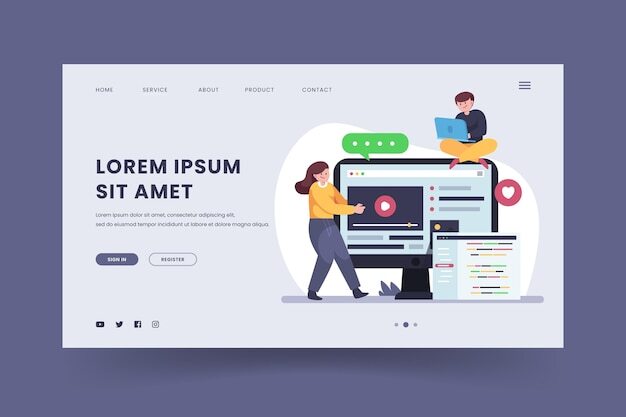Accessibility:
In today’s digital age, accessibility is no longer just a feature—it is a fundamental necessity in web development. Making your WordPress site accessible ensures that all users, including those with disabilities, can effectively navigate, understand, and interact with your content. This is not only a legal requirement in many regions, with regulations like the Americans with Disabilities Act (ADA) and Web Content Accessibility Guidelines (WCAG) setting the standards, but also a crucial step toward fostering inclusivity and enhancing the overall user experience.In this article, we will delve into actionable strategies, practical tips, and essential tools to help you maximize your WordPress site’s accessibility and ensure that your website aligns with both legal requirements and ethical principles.
- Choose an Accessible WordPress Theme
The foundation of an accessible website begins with selecting an inclusive WordPress theme. Opt for themes that adhere to web accessibility standards, such as the Web Content Accessibility Guidelines (WCAG). These guidelines cover essential elements like color contrast, font sizes, keyboard navigation, and responsive design. Always test your chosen theme to ensure it maintains accessibility features when customized to your branding and content needs.
- Use Semantic HTML Markup
Proper HTML markup is crucial for making your website accessible to all users, including those who rely on screen readers and other assistive technologies. Utilize semantic HTML elements, such as headings (H1, H2, etc.), lists, and paragraphs, to provide clear structure and hierarchy to your content. Avoid using headings solely for visual styling, as this can confuse screen readers and users with disabilities.
- Provide Alternative Text for Images
Images are an integral part of any website, but they must be accessible to those who cannot view them. Adding descriptive alternative text (alt text) to your images enables screen readers to describe the content of the images accurately. Make sure to convey the image’s purpose or information rather than just its appearance. Additionally, consider using captioning or audio descriptions for multimedia content.
- Ensure Keyboard Accessibility
Some users may have difficulty using a mouse or other pointing device. To accommodate them, ensure that all interactive elements, such as buttons, links, and forms, are fully accessible via keyboard navigation. Users should be able to navigate your website and access all functionalities using the “Tab” key and other standard keyboard commands.
- Test Color Contrast
Color contrast is critical for users with visual impairments or color blindness. Ensure that text and graphical elements have sufficient contrast against their background, making them easily distinguishable. Numerous online tools are available to check color contrast ratios and ensure compliance with WCAG guidelines.
- Provide Captions and Transcripts
For multimedia content like videos and podcasts, offer captions and transcripts. Captions make videos accessible to users with hearing impairments, while transcripts provide a text-based alternative for non-audio content. Providing these options ensures that all users can access your multimedia content effectively.
- Regularly Test for Accessibility
Periodically testing your WordPress site for accessibility is essential to identify and fix potential issues. Conduct manual tests using various assistive technologies, such as screen readers and keyboard navigation, to evaluate the user experience. Additionally, consider using automated accessibility testing tools or plugins specifically designed for WordPress.
In conclusion, creating an accessible WordPress site is a commitment to inclusivity and user-centered design. By implementing the above strategies and staying informed about evolving accessibility standards, you can ensure that your website is welcoming and usable for all visitors, regardless of their abilities. An accessible website not only complies with legal requirements but also opens up new opportunities for engagement and fosters a positive user experience for every individual. Start maximizing your WordPress site’s accessibility today and contribute to a more inclusive online community.

